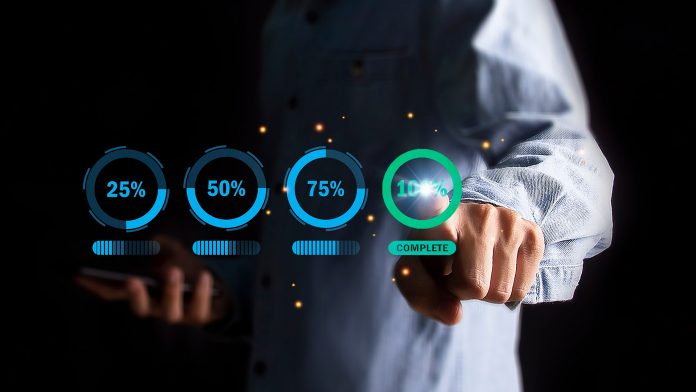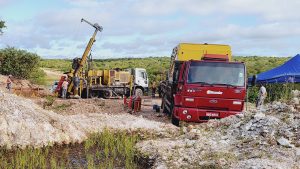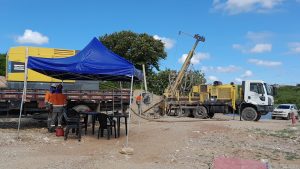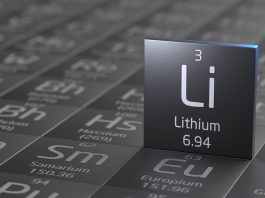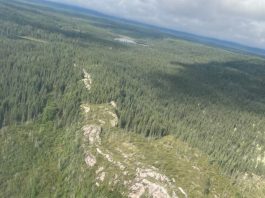Oceana Lithium has made progress with its lithium projects in Brazil and Australia.
ASX-listed Oceana Lithium is off to a promising start, with the company’s first diamond drilling campaign being planned at its Solonópole Lithium Project in Ceara State, Brazil, after announcing positive results from the project’s first systematic exploration campaign.
The company is also advancing its 100% owned Napperby Lithium Project in the Northern Territory, Australia.
Oceana’s advantageous Solonópole Lithium Project
In Brazil, Oceana has an early mover advantage, having picked up its Solonópole Project prior to 2023 when the country emerged as an exploration hotspot.
In September 2023, the company also welcomed CEO Caue Araujo, a Brazilian-born Australian citizen with experience with the South American country’s mining champion Vale and senior roles with Tier 1 mining advisory and consulting companies in Brazil and Australia.
A strong in-country team with over 30 personnel has been built over the past 18 months, allowing Oceana to simultaneously develop the Solonópole Project and assess new opportunities in the country.
Identifying lithium pegmatites in the Northeast of Brazil
A 2,000m phase 1 scout RC drilling completed at Solonópole in July 2023 successfully intercepted multiple thick pegmatites and some anomalous lithium and tantalum grades from shallow depth.
Assays included 1m of 0.83% Li2O as part of a 15m (not true width) zone averaging 0.34% Li2O proximal to where spodumene was previously identified in the Bom Jesus de Baixo (BJdB) Pit and 1m of 0.42% Li2O as part of 10m (not true width) zone averaging 0.2% Li2O from the BJdB Central area.
Anomalous results were also returned from trenching and drilling at the Zilcar and Rolados target, within the Soledade West Prospect. The best intercepts were from SOL-RC-008 at Zilcar II, with a maximum value over 1m of 0.95% Li2O and Lithium mineralised zone from 46m to 53m (7m not true width) averaging 0.49% Li2O, including 3m at 0.69% Li2O.
Oceana’s systematic exploration approach also includes over 8,300 soil samples analysed by XRF for lithium-caesium-tantalum (LCT) pathfinders, of which 1,908 soil samples have also been analysed by SGS laboratory for Lithium.
Together with the new data from geophysics, these soil geochemistry anomalies have indicated several swarms of pegmatite bodies striking in a NE-SW direction. This new information is significant, showing that there is more than one lithium-bearing pegmatite at the BJdB Pit, BJdB Central, Tin Mine, Zilcar II and Rolados targets.
The company is preparing to conduct deeper diamond drilling in 2024, with results of soil sampling and anomalies identified through scout drilling assisting in better defining targets at BJdB and Soledade West prospects.
“Although early days, I am encouraged by the results of the scout drilling programme, as the anomalous lithium grades intercepted suggests that the mineralisation observed at surface continues at depth,” Senior Geologist and Competent Person James Abson said.
“The follow-up diamond drilling campaign being planned by Oceana will not only assist in confirming the exact extension of this lithium mineralisation at the BJdB targets but also test other new pegmatites identified at other locations within the various Li-anomalous soil grids.”
The company is completing further soil sampling grids in the northern part of the Solonópole tenements, where more pegmatites have been identified and will look to test this with trenching and drilling in the new year as well.
With its strong in-country team, Oceana continues to assess other potential opportunities in Brazil, where the lithium exploration sector is not as mature as in other parts of the world, such as Western Australia.
Fieldwork at the Napperby Lithium Project
Despite Napperby not receiving quite the same amount of exploration work as Solonópole, fieldwork has still been progressing, primarily in the form of geochemical sampling and geological mapping.
Oceana has recently completed another soil geochemistry infill sampling program, this time in the southeast corner of EL32836, to better define and understand the lithium anomalies highlighted by the 2022 soil sampling programme. A total of 107 sample points were collected along approximately 30km of sample lines.
As with the previous programme, sample centres are at 200m, but the program has seen the previous 2km line separation closed down to 500m. This design is expected to confirm the continuity of the lithium anomalies between the previous lines. The results are expected in late January/early February 2024.
Several anomalous areas have been identified within the EL32836 tenement, but further work is needed to develop targets.
Oceana believes it could be in a position to start a maiden drilling campaign at the Napperby Lithium Project around the second half of 2024.
Located where it is, in the Northern Arunta province north of Alice Springs, the 1,160km2 Napperby landholding is also prospective for rare earths and other speciality metals.
The Northern Arunta also hosts Arafura Resources’ Nolans Rare Earths Project, one of the largest rare earths deposits in the country.
Work by the NT Geological Survey published in 2005 confirmed that the pegmatites in the Napperby area were of the LCT variety, while multiple pegmatite dykes with occurrences of tin and tantalum have also been identified within the project.
Oceana opts out of Monaro Project in Quebéc, Canada
On 5 July 2023, Oceana signed an option agreement to purchase 100% of the 207 mineral claims that comprise the Monaro Lithium Project, which covers an area of 104km2 along the western portion of the Duhesme Lake metavolcanic-sedimentary greenstone belt.
Although elevated levels of rubidium (Rb) and low potassium (K) to rubidium ratios have delineated high-priority targets for further investigation (refer to ASX Announcement dated 16 November 2023), overall results from the field programme conducted toward the end of the northern summer field season did not meet Oceana’s expectations.
After due consideration, on 2 January 2024, Oceana announced it had elected not to exercise the option to acquire the Monaro Lithium Project. All rights to the project exploration claims will now revert to respective vendors with no further exploration or service payment obligations to Oceana.
Oceana retains its interest in the 100% owned Solonópole Lithium Project in Brazil and the Napperby project in Australia, which will be the focus of ongoing exploration.

